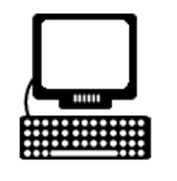Team:Imperial College London/Drylab
From 2009.igem.org
(→80pxDry Lab Hub) |
(→80pxDry Lab Hub) |
||
| Line 6: | Line 6: | ||
Conclusions from the models aim to provide the team with a functional understanding of the system as well as design constraints and considerations that should be addressed in the genetic constructs. | Conclusions from the models aim to provide the team with a functional understanding of the system as well as design constraints and considerations that should be addressed in the genetic constructs. | ||
| - | In the Dry Lab, we have implemented several | + | In the Dry Lab, we have implemented several models, explaining the behaviour of different parts of the system. This section will use provide a summary of the models. The conclusions drawn can also be found here. |
Modelling in this project has been important in defining the "Engineering constraints" of the project, and in particular, we have focused in quantifiying the [https://2009.igem.org/Team:Imperial_College_London/Temporal_Control temporal control] aspects of our system. | Modelling in this project has been important in defining the "Engineering constraints" of the project, and in particular, we have focused in quantifiying the [https://2009.igem.org/Team:Imperial_College_London/Temporal_Control temporal control] aspects of our system. | ||
Revision as of 23:57, 13 October 2009

 Dry Lab Hub
Dry Lab Hub
Welcome to the Dry Lab!
The goal of the Dry Lab has been to support the Wet Lab by answering questions of interest. Conclusions from the models aim to provide the team with a functional understanding of the system as well as design constraints and considerations that should be addressed in the genetic constructs.
In the Dry Lab, we have implemented several models, explaining the behaviour of different parts of the system. This section will use provide a summary of the models. The conclusions drawn can also be found here.
Modelling in this project has been important in defining the "Engineering constraints" of the project, and in particular, we have focused in quantifiying the temporal control aspects of our system.
Click on the links to find out more!




 "
"



